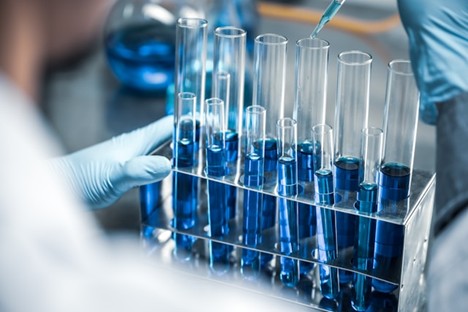
In biomedical research and diagnostics, antibodies are indispensable tools. Among the various types available, polyclonal antibodies (pAbs) are widely used for their ability to recognize multiple epitopes on a single antigen. This makes them especially valuable in applications such as ELISA, Western blotting, immunoprecipitation, and immunohistochemistry.
A key component in the development of high-specificity polyclonal antibodies is the use of synthetic peptides. These short amino acid sequences, produced through advanced peptide manufacturing techniques, serve as custom-designed immunogens tailored to elicit targeted immune responses against specific protein regions.
This article explores how peptides are used to generate high-specificity polyclonal antibodies, why synthetic peptide immunogens are so valuable, and how modern customization techniques have refined the antibody production process.
Polyclonal antibodies are a heterogeneous mix of immunoglobulins secreted by different B-cell clones in response to an antigen. When introduced into a host animal (such as a rabbit, goat, or sheep), the immune system mounts a response that generates antibodies against multiple epitopes on the target antigen.
This multiepitope recognition makes polyclonal antibodies more robust and sensitive, as they are less susceptible to conformational changes in the antigen or mutations in a single epitope.
While whole proteins can be used as immunogens, using synthetic peptides offers several distinct advantages:
Specificity: Synthetic peptides can be designed to target unique regions of a protein, such as antigenic determinants or functionally critical domains.
Purity: Peptides are chemically synthesized, ensuring high purity and reducing the risk of contamination from other proteins.
Accessibility: Peptides derived from transmembrane regions or intracellular portions of a protein can be targeted - regions that may be inaccessible or unstable in full-length protein formats.
Safety and Ease of Use: They do not require the cloning, expression, or purification associated with full proteins, making them easier and safer to produce.
The success of peptide-based polyclonal antibody production begins with thoughtful peptide design. A well-designed peptide must be:
Antigenic: Capable of stimulating an immune response.
Accessible: Mimicking a surface-exposed region of the native protein.
Unique: Specific to the target protein to reduce cross-reactivity.
Soluble and Stable: For successful synthesis and injection.
Bioinformatics tools are often used to predict linear B-cell epitopes - short sequences likely to be surface-exposed and immunogenic. Programs such as BepiPred, ABCpred, and IEDB analysis resource use structural, hydrophilic, and flexibility-based algorithms to suggest optimal regions.
Peptides are typically between 10–20 amino acids long. Longer sequences can increase immunogenicity but may also be more prone to folding or poor solubility. To improve peptide properties, sequences are often adjusted to avoid hydrophobic stretches or aggregation-prone motifs.
One challenge of using short peptides is their low immunogenicity when injected alone. To enhance the immune response, peptides are often conjugated to carrier proteins, which act as scaffolds that trigger stronger antibody production.
Common Carrier Proteins:
KLH (Keyhole Limpet Hemocyanin): Highly immunogenic, often used in antibody generation.
BSA (Bovine Serum Albumin): Used for ELISA and assay controls.
OVA (Ovalbumin): Occasionally used for immunizations and assay validation.
Chemical conjugation methods like glutaraldehyde crosslinking or maleimide-thiol coupling are employed to attach peptides to carriers, typically through an added cysteine residue at the N- or C-terminus.

Once the peptide-carrier conjugate is prepared, it is emulsified with an adjuvant—such as Freund’s Complete or Incomplete Adjuvant—to further stimulate the immune response.
The Process:
Initial Immunization: The conjugate is injected subcutaneously or intramuscularly into a host animal.
Booster Injections: Administered at intervals to maintain or amplify the antibody response.
Serum Collection: Blood is drawn, and the serum containing the polyclonal antibodies is harvested.
Purification: Antibodies are purified using protein A/G columns or affinity purification against the immunizing peptide.
Modern peptide synthesis allows for numerous custom modifications to improve the performance and stability of immunogens and antibodies:
Ahx (aminohexanoic acid) or PEG (polyethylene glycol) linkers are added to increase flexibility and solubility, minimizing steric hindrance between the peptide and carrier protein or solid phase.
Disulfide or head-to-tail cyclization can mimic conformational epitopes, making the peptide more representative of the native protein.
Incorporating phosphorylated, methylated, or acetylated residues allows the generation of post-translational modification (PTM)-specific antibodies, ideal for signaling and regulatory protein studies.
Replacing L- with D-amino acids at select positions can increase peptide stability, reduce degradation, and enhance immune responses.
Using synthetic peptides to generate polyclonal antibodies offers many benefits:
Peptide-derived polyclonal antibodies are employed in:
Western Blotting: Detecting specific protein fragments or cleavage products.
Immunohistochemistry (IHC): Localizing protein expression in tissues.
ELISA: Quantifying protein levels in complex samples.
Post-translational modification analysis: Studying phosphorylation, acetylation, and methylation.
Pathogen detection: Generating antibodies against viral or bacterial peptide sequences.
The use of synthetic peptides in generating high-specificity polyclonal antibodies has revolutionized immunological research. From epitope prediction to carrier protein conjugation and post-synthesis modifications, peptide design allows researchers to fine-tune the immune response, reduce cross-reactivity, and target specific regions of proteins with exceptional precision.
As peptide synthesis technologies continue to advance, so too does our ability to create tailored, reliable, and reproducible antibodies that support cutting-edge biomedical discovery and therapeutic development.